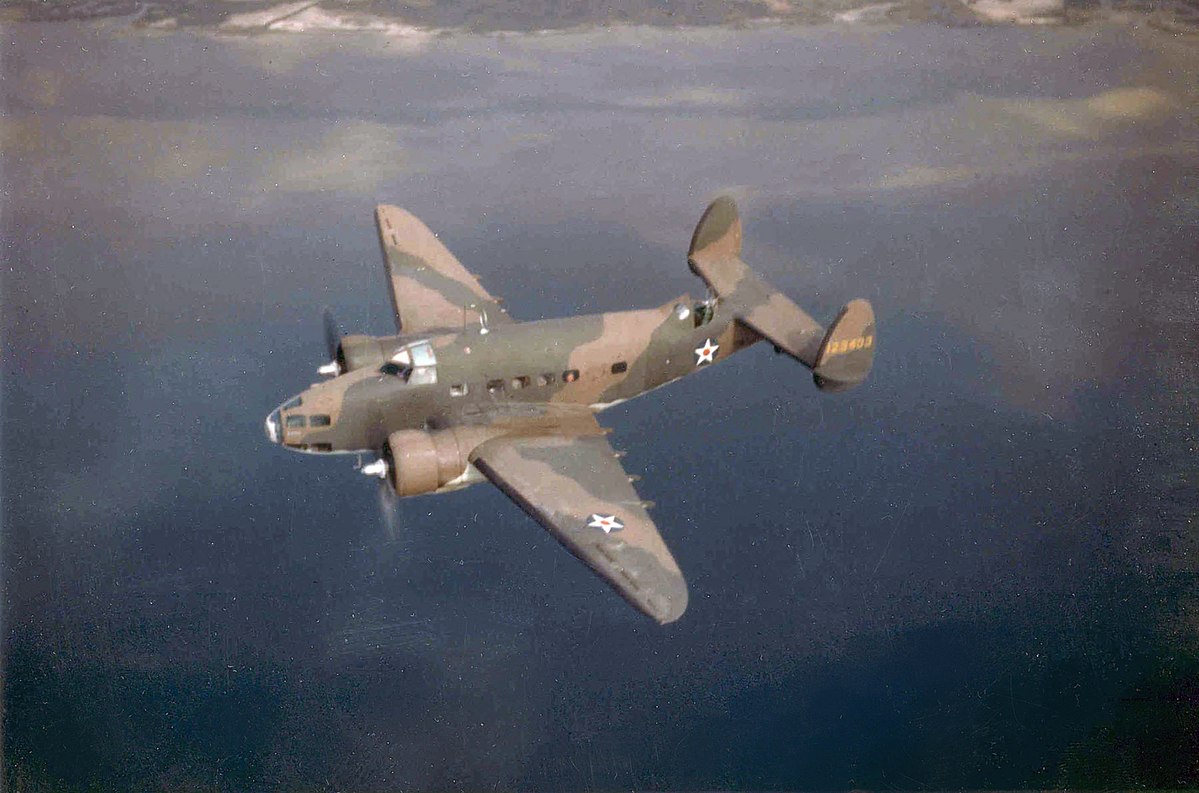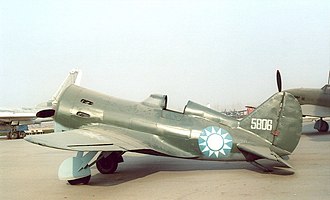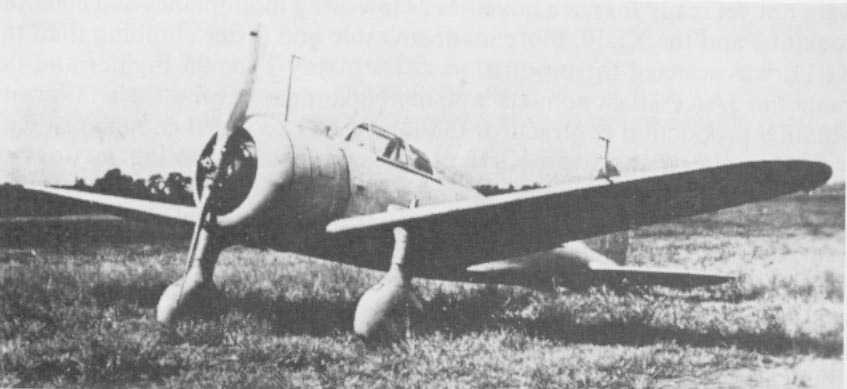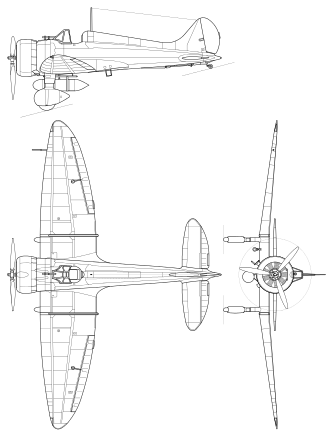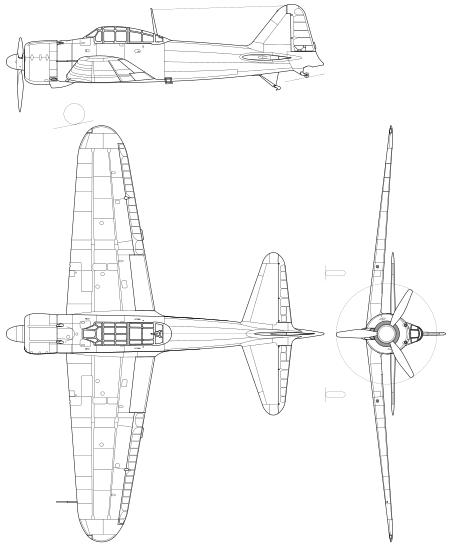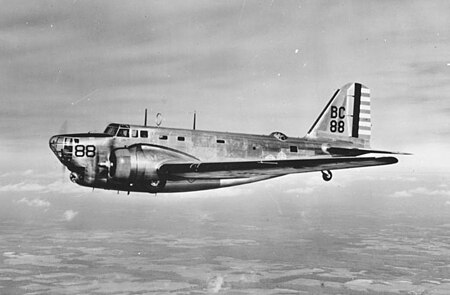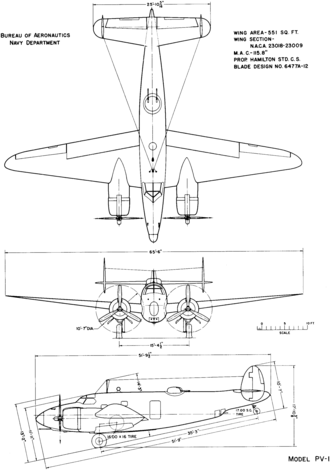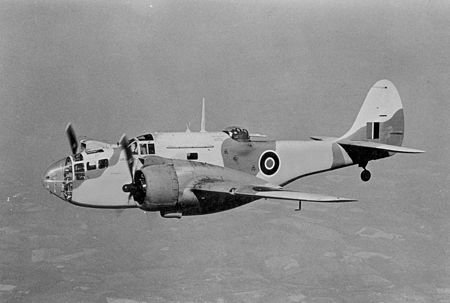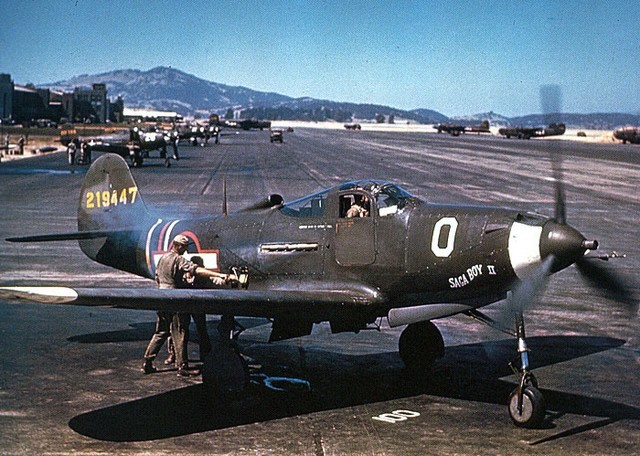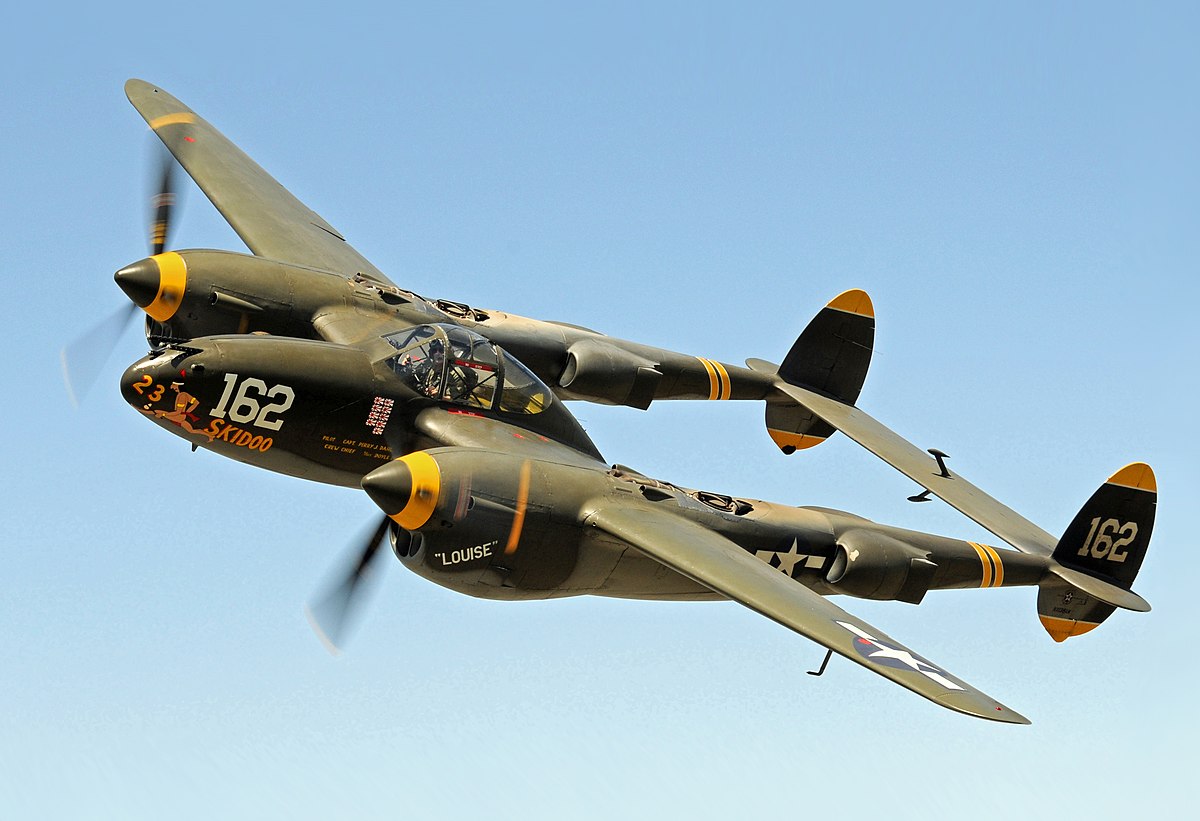This I know, but they never got it and were never going to get it. That was still one of our main bombers at the time, and we were not about to export them to China. So their hopes of bombing Japan in return was only a dream, their only real use was on the battlefields in China. And they never had the numbers of bombers to be effective in that role.
Watching the development of US Bombers in that era is interesting, as in many ways they were more advanced than the fighters. We had monowing bombers as early as 1931, and went through 3 until the B-10 was finally adopted. And the B-10 was later adapted for the B-12 through B-14 bombers, then 2 more prototypes until the B-17 came out.
The A-29 Hudson is kind of an odd duck. A conversion from a civilian airliner, it was designated in the US as a naval patrol vessel and cargo aircraft, but some were converted into bombers. Mostly it is remembered as footnotes in history books as that was the first US aircraft to sink a German submarine. It was a rather good platform, and really was what I jokingly called a "multi-role bomber". Designed for passengers and freight, it was great in those roles. But also great as a naval patrol aircraft (which is how the US mostly used it), as well as a light bomber as it was very maneuverable when compared to most of its contemporaries (they just replaced the depth charges with bombs). But with a payload of only 7 tons of bombs, it was primarily used in that role against submarines and other low risk naval targets.
And yes, China did get some of those. But with such a small bomb load they would never have been effective other than on battlefields. China wanted large bombers, but nobody would give them any. Everybody that was making them were still trying to build up their own inventories, and had none left over for export.
PART THREE
As for fighters for China, when it came to most modern and recent designs, the selection was rather limited. The P-38 and P-39 were still in development somewhat and just starting operational service and intro to USAAC squadrons. So they weren't available. Plus with both having tricycle landing gear it was problematic for them to operate from crude runways. Pretty much left the choice to the P-40. Since Curtiss was about to produce an improved version, the P-40E, the UK was willing to let 100 of the P-40B in it's production allocation go to the AVG in exchange for the P-40Es.
For some further context;
...
The
Bell P-39 Airacobra is a
fighter produced by
Bell Aircraft for the
United States Army Air Forces during
World War II. It was one of the principal American fighters in service when the
United States entered combat. The P-39 was used by the
Soviet Air Force, and enabled individual Soviet pilots to collect the highest number of kills attributed to any U.S. fighter type flown by any air force in any conflict.
[N 2] Other major users of the type included the
Free French, the
Royal Air Force, and the
Italian Co-Belligerent Air Force.
[4]
It had an unusual layout, with the engine installed in the center fuselage, behind the pilot, and driving a
tractor propeller in the nose with a long shaft. It was also the first fighter fitted with a
tricycle undercarriage.
[5] Although its mid-engine placement was innovative, the P-39 design was handicapped by the absence of an efficient
turbo-supercharger, preventing it from performing high-altitude work. For this reason it was rejected by the RAF for use over western Europe but adopted by the USSR, where most air combat took place at medium and lower altitudes.
Together with the derivative
P-63 Kingcobra, the P-39 was one of the most successful fixed-wing aircraft manufactured by Bell.
[6]
...

en.wikipedia.org
~~~~~~~~~~~
The
Lockheed P-38 Lightning is an American single-seat, twin piston-engined
fighter aircraft that was used during
World War II. Developed for the
United States Army Air Corps by the
Lockheed Corporation, the P-38 incorporated a distinctive
twin-boom design with a central
nacelle containing the
cockpit and armament. Along with its use as a general
fighter, the P-38 was used in various
aerial combat roles, including as a highly effective
fighter-bomber, a
night fighter, and a
long-range escort fighter when equipped with
drop tanks.
[4] The P-38 was also used as a bomber-pathfinder, guiding streams of
medium and
heavy bombers, or even other P-38s equipped with bombs, to their targets.
[5] Used in the
aerial reconnaissance role, the P-38 accounted for 90 percent of the aerial film captured over Europe.
[6]
The P-38 was used most successfully in the
Pacific Theater of Operations and the
China-Burma-India Theater of Operations as the aircraft of America's top
aces,
Richard Bong (40 victories),
Thomas McGuire (38 victories), and
Charles H. MacDonald (27 victories). In the
South West Pacific theater, the P-38 was the primary long-range fighter of
United States Army Air Forces until the introduction of large numbers of
P-51D Mustangs toward the end of the war.
[7][
page needed] Unusual for an early-war fighter design, both engines were supplemented by
turbosuperchargers. This gave the P-38 excellent high-altitude performance, making it one of the earliest
Allied fighters capable of performing well at high altitudes.
[8] The turbosuperchargers also muffled the exhaust, making the P-38's operation relatively quiet.
[9] The Lightning was extremely forgiving in-flight and could be mishandled in many ways, but the
rate of roll in early versions was low relative to other contemporary fighters; this was addressed in later variants with the introduction of hydraulically boosted
ailerons.
[10] The P-38 was the only American fighter aircraft in large-scale production throughout American involvement in the war, from the
Attack on Pearl Harbor to
Victory over Japan Day.
[11]
...

en.wikipedia.org
~~~~~~~~~~~
With regard to the P-40, like many fighters of the early war years it was largely armed with .30 cal. machine guns(mg). Typical of most machine guns of the era meant to fire rifle type ammunition. The P-40B & C models had two .50 cal. MGs on the nose, firing through the prop, and a pair of .30 cal. MGs in each wing. The P-40E had a more powerful engine, slightly different appearance, and most significantly, six .50 cal. MGs, three in each wing. P-40E started to be available to the AVG about March-April 1942 and would fill in the losses of the P-40Bs and eventually releive them from combat use.
...
The
Curtiss P-40 Warhawk is an American single-engined, single-seat, all-metal
fighter and
ground-attack aircraft that first flew in 1938. The P-40 design was a modification of the previous
Curtiss P-36 Hawk which reduced development time and enabled a rapid entry into production and operational service. The Warhawk was used by most
Allied powers during World War II, and remained in frontline service until the end of the war. It was the third most-produced American fighter of World War II, after the
P-51 and
P-47; by November 1944, when production of the P-40 ceased, 13,738 had been built,
[3] all at
Curtiss-Wright Corporation's main production facilities in
Buffalo, New York.
P-40 Warhawk was the name the
United States Army Air Corps gave the plane, and after June 1941, the
USAAF adopted the name for all models, making it the official name in the U.S. for all P-40s. The
British Commonwealth and
Soviet air forces used the name
Tomahawk for models equivalent to the original P-40, P-40B, and P-40C, and the name
Kittyhawk for models equivalent to the P-40D and all later variants.
The P-40's liquid-cooled, supercharged
Allison V-1710 V-12 engine's lack of a
two-speed supercharger made it inferior to
Luftwaffe fighters such as the
Messerschmitt Bf 109 or the
Focke-Wulf Fw 190 in high-altitude combat and it was rarely used in operations in
Northwest Europe. However, between 1941 and 1944, the P-40 played a critical role with Allied air forces in three major theaters:
North Africa, the
Southwest Pacific, and
China. It also had a significant role in the
Middle East,
Southeast Asia,
Eastern Europe,
Alaska and
Italy. The P-40's performance at high altitudes was not as important in those theaters, where it served as an
air superiority fighter, bomber escort and
fighter-bomber. Although it gained a postwar reputation as a mediocre design, suitable only for
close air support, more recent research including scrutiny of the records of individual Allied squadrons indicates that this was not the case: the P-40 performed surprisingly well as an air superiority fighter, at times suffering severe losses, but also inflicting a very heavy toll on enemy aircraft.
[9] Based on war-time victory claims, over 200 Allied fighter pilots – from the UK, Australia, New Zealand, Canada, South Africa, the US and the Soviet Union – became
aces flying the P-40. These included at least 20 double aces,
[10] mostly over North Africa, China, Burma and India, the South West Pacific and Eastern Europe. The P-40 offered the additional advantages of low cost and durability, which kept it in production as a ground-attack aircraft long after it was obsolescent as a fighter.
P-40s first saw combat with the British Commonwealth squadrons of the
Desert Air Force in the Middle East and North African campaigns, during June 1941.
[4][5] No. 112 Squadron Royal Air Force, was among the first to operate Tomahawks in North Africa and the unit was the first
Allied military aviation unit to feature the "shark mouth" logo,
[6][7] copying
similar markings on some Luftwaffe
Messerschmitt Bf 110 twin-engine fighters.
[6] [N 1]

en.wikipedia.org
